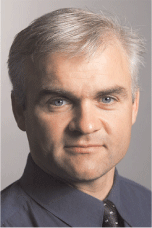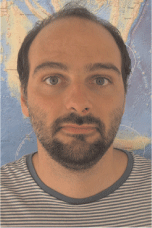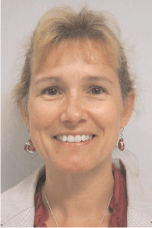Petroleum prospectivity of the Tasman Frontier
Francois Bache A , Vaughan Stagpoole A , Rupert Sutherland A , Julien Collot B , Pierrick Rouillard C , Ron Hackney D , Nadege Rollet D and Takehiko Hashimoto DA GNS Science.
B Dimenc.
C ADECAL-Zoneco.
D Geoscience Australia.
The APPEA Journal 54(2) 520-520 https://doi.org/10.1071/AJ13093
Published: 2014
Abstract
The Fairway Basin lies between Australia and New Caledonia in the northern Tasman Frontier area with water depths ranging from less than 1,000 to 2,400 m. This basin was formed in the mid-to-late Cretaceous during the eastern Gondwana breakup and since then has received detrital and pelagic sediments. It is known for its 70,000 km2 bottom simulating reflector, interpreted as one of the world’s largest gas hydrate layers or as a regional diagenetic front. The seismic reflection data shows sedimentary thicknesses (up to 4 km) and geometries capable of trapping hydrocarbons. The authors interpreted the seismic stratigraphy and available well data in terms of paleogeography and tectonic evolution. This work allowed the discovery of a deeply buried delta, probably of the same type as the deep-water Taranaki Delta. This stratigraphic framework is used to constrain multi-1D generation modelling and to test three main hypotheses of source rocks. The most likely scenario, similar to the one accepted for the Taranaki petroleum province, are a type-III and type-II source rocks intercalated in a Cretaceous prograding series. Another possible scenario is a source rock equivalent to the east Australian Walloon Formation and the occurrence of the marine source rock in the pre-rift sequence. Although, the large modelled volumes at this stage are speculative due to limited data on source rock composition, richness and distribution, as well as on the presence and quality of reservoir and seal, this study confirms the prospectivity of the Fairway Basin and the need for more data to further assess this basin.

Francois Bache is a senior geoscientist in the Marine Geoscience Department at GNS Science. He has a PhD in marine geology from the University of Brest, France. Francois specialises in seismic stratigraphy and has papers published about various topics and geographical areas, including New Zealand, Mediterranean Basin, Sultanate of Oman and Bolivia. He leads the GNS Science regional structure and tectonic history of Zealandia Project, where he has worked since 2010. His interests include basin-scale analysis, subduction initiation and frontier basin exploration. |

Dr Vaughan Stagpoole is the head of the Marine Geoscience Department at GNS Science in Lower Hutt. He is a geophysicist, specialling in research on the formation and development of sedimentary basins and on basin modelling. Recently, he has been involved in the assessment of the prospectivity of New Zealand’s frontier sedimentary basins and the New Zealand Law of the Sea project. Vaughan has a PhD degree from Victoria, University of Wellington. |

Rupert Sutherland is a principal scientist in the Ocean Exploration Department at GNS. He has 25 years’ experience doing petroleum-relevant science and has published over 70 papers in peer-reviewed scientific journals. His specialist field is large-scale and small-scale tectonic processes, including global plate motions and sedimentary basin formation in the southwest Pacific. |

Julien Collot is geophysicist and leader of the marine geophysics team at the Geological Survey of New Caledonia. He holds a geophysics engineering degree from EOST (Strasbourg, France) and a PhD from the University of Brest (France). His PhD focused on the tectonic evolution of the Tasman Frontier and was conducted both in the Marine Geoscience Department of Ifremer and the Geological Survey of New Caledonia from 2006 to 2009. His interests include Tasman Frontier and New Caledonia geodynamics, subduction initiation and frontier exploration. |

Pierrick Rouillard is an exploration geologist at the Geological Survey of New Caledonia. He has 6 years’ experience working at basin and reservoir scales. He coordinates the marine mineral resources division of the New Caledonia ZoNéCo Research Program. His main research interests are clastic sedimentology from shallow to deep water and seismic stratigraphy. Pierrick holds a PhD from the University of Nice Sophia-Antipolis defended in 2010 and funded by GDF-SUEZ. |

Ron Hackney is a Senior Geoscientist in the Basin Resources Group at Geoscience Australia. He has almost 20 years’ experience in the application of potential-field data in a range of tectonic settings and is presently working to enhance the use of potential-field data in basin analysis at Geoscience Australia. Prior to joining GA in 2008, Ron was a Junior Professor at the University of Kiel in Germany. He did a postdoc at the Free University of Berlin, has a PhD from the University of Western Australia (2001), an MSc from Victoria University of Wellington (1995) and a BSc (Honours) from the Australian National University. Ron is presently the Secretary of the Australian Geoscience Council. Member: ASEG, GSA. |

Nadege Rollet is a Senior Geoscientist in Geoscience Australia’s Basin Resources Group. Nadege graduated from the University of Paris, Pierre et Marie Curie, France, where she obtained an MSc (1995) and a PhD (1999) in geology and geophysics. Her studies focused on geodynamic reconstructions around the South Tasman Rise and structural framework of the Ligurian Sea in the Western Mediterranean. Since joining Geoscience Australia in 2000, she has contributed to geodynamic reconstructions, structural framework, and seepage studies for Australia’s continental margins, and assessment of the petroleum prospectivity in the Remote Eastern Frontiers and in the offshore northern Perth Basin. Nadege is presently working on a project investigating CO2 storage and petroleum prospectivity in the Browse Basin. Member: PESA. |

Riko Hashimoto is the Section Leader Onshore Hydrocarbons in Geoscience Australia’s Basin Resources Group. He has a background in sequence stratigraphy, sedimentology and geomorphology, and holds a PhD and a BSc (Honours) from the University of Sydney. He has extensive previous experience in the Palaeozoic, Mesozoic and Cenozoic depositional systems of onshore and offshore eastern Australia through work at the New South Wales Department of Primary Industries and consultancies, and in the deepwater offshore Tasman Sea region through leadership of the Remote Eastern Frontiers Project at Geoscience Australia. He is currently leading studies of the Georgina and Cooper basins for unconventional hydrocarbon resource potential. Member: PESA. |
References
Bache, F., Mortimer, N., Sutherland, R., Collot, J., Roullard, P., Stagpoole, V., and Nicol, A., In Press—Seismic stratigraphic record of transition from Mesozoic subduction to continental breakup in the Zealandia sector of eastern Gondwana. Gondwana Research.Bache, F., Stagpoole, V., and Sutherland, R., 2012a—Seismic stratigraphy of the Reinga Basin, NW New Zealand: tectonic and petroleum implications. In: Rosen, N.C., Weimer, P., Coutes dos Anjos, SM., Henrickson, S., Marques, E., Mayall, M., Fillon, R., D’Agostino, T., Saller, A., Campion, K., Huang, T., Sarg, R., and Schroeder, F., (eds.) New understanding of the petroleum systems of continental margins of the world, 221–22. Houston, Texas: Gulf Coast Section SEPM (GCSSEPM).
Bache, F., Sutherland, R., Stagpoole, V., Herzer, R., Collot, J., and Rouillard, P. (2012b). Stratigraphy of the southern Norfolk Ridge and the Reinga Basin: a record of initiation of Tonga-Kermadec-Northland subduction in the southwest Pacific. Earth Planetary Letters , 41–53.
Ballance, P.F., 1993—The Paleo-Pacific, post-subduction, passive margin thermal relaxation sequence (Late Cretaceous-Paleogene) of the drifting New Zealand Continent. In: Ballance, P.F., (ed.) South Pacific Sedimentary Basins, 93–110. Sedimentary Basins of the World 2. Amsterdam, The Netherlands: Elsevier.
Collot, J., Geli, L., Lafoy, Y., Vially, R., Cluzel, D., Klingelhoefer, F., and Nouze, H. (2008). Tectonic history of northern New Caledonia Basin from deep offshore seismic reflection: relation to late Eocene obduction in New Caledonia, Southwest Pacific. Tectonics 27, 1–20.
Cook, R.A., Gregg, R.C., and Bennett, D.J. (1999). New thinking on the petroleum prospectivity of deep Mesozoic sediments in New Zealand basins. APPEA Journal 39, 386–98.
Gaina, C., Muller, R.D., Royer, J.Y., Stock, J.M., Hardebeck, J., and Symonds, P. (1998). The tectonic history of the Tasman Sea: a puzzle with thirteen pieces. Journal of Geophysical Research 103, 413–433.
Herzer, R.H., Sykes, R., Killops, S.D., Funnell, R.H., Burggraf, D.R., Townend, J., Raine, J.I., and Wilson, G.J. (1999). Cretaceous carbonaceous rocks from the Norfolk Ridge system, Southwest Pacific: implications for regional petroleum potential. New Zealand Journal of Geology and Geophysics 42, 57–73.
Ingram, F.T., and Robinson, V.A., 1996—Petroleum prospectivity of the Clarence-Moreton Basin in New South Wales. In: Facer, R.a., (ed.) Petroleum Bulletin, 3, 133. Sydney, NSW: New South Wales Department of Mineral Resources.
Killops, S.D., Woolhouse, A.D., Weston, R.J., and Cook, R.A. (1994). A geochemical appraisal of oil generation in the Taranaki Basin, New Zealand. AAPG Bulletin 78, 560–585.
Mortimer, N. (2004). New Zealand’s geological foundations. Gondwana Research 7, 261–72.
Rouillard P., Collot, J., Bache, F., Sutherland, R., Kroeger, K., and Funnell, R., 2014—Petroleum implications of stacked deltas in the Fairway Basin, offshore New Caledonia, Northern Tasman Frontier, Extended Abstract, APPEA Conference, Perth 2014.
Schellart, W.P., Lister, G.S., and Toy, V.G. (2006). A Late Cretaceous and Cenozoic reconstruction of the southwest Pacific Region: tectonics controlled by subduction and slab rollback processes. Earth Science Reviews 76, 191–223.
Suggate, R.P. (1990). Coal rank in Permian and Lower Cretaceous rocks of New Zealand. New Zealand Journal of Geology and Geophysics 33, 163–72.
Sutherland, R. (1999). Basement geology and tectonic development of the greater New Zealand region; an interpretation from regional magnetic data. Tectonophysics 308, 341–62.
Sutherland, R., Collot, J., Lafoy, Y., Logan, G.A., Hackney, R., Stagpoole, V., Uruski, C., Hashimoto, T., Higgins, K., Herzer, R.H., Wood, R., Mortimer, N., and Rollet, N. (2010). Lithosphere delamination with foundering of lower crust and mantle caused permanent subsidence of New Caledonia Trough and transient uplift of Lord Howe Rise during Eocene and Oligocene initiation of Tonga-Kermadec subduction, western Pacific. Tectonics 29, 1–16.
Sutherland, R., Viskovic, G.P.D., Bache, F., Stagpoole, V.M., Collot, J., Rouillard, P., Hashimoto, T., Hackney, R., Higgins, K., Rollet, N., Patriat, M., and Roest, W.R., 2012—Compilation of seismic reflection data from the Tasman Frontier region, southwest Pacific. GNS Science Report 2012/01. New Zealand, GNS Science.


